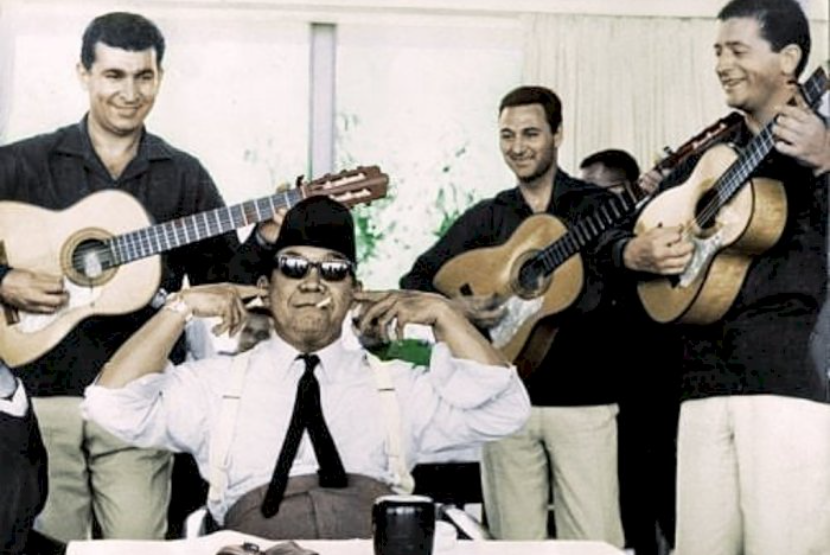JAKARTA – The relationship between music and power in Indonesia is often colored by tension and repression. History records, various ruling regimes often use art, including music, as a means of social and political control. From the Old Order era to the New Order, their musicians and works are often victims of intimidation and prohibition.
Era Sukarno: The Beatles and Koes Plus are blasphemed
In the late 1950s, President Sukarno replaced the liberal democratic system with guided democracy. At that time, Indonesia was also in conflict with the Dutch regarding the problem of West Irian (now Papua). The anti-West movement also strengthened, supported by left groups.
In the midst of a heated political situation, the international music world was enlivened by the appearance of The Beatles. This British band not only brings changes in music, but also lifestyle, ranging from long hair to how to dress. However, Sukarno actually condemned the Beatles, calling their music as “ngak-ngik-ngok” and forbids it to circulate in Indonesia.
Although prohibited, the influence of the Beatles is unstoppable. In Indonesia, the Koes Brothers (who later became Koes Plus) emerged as a local representation of The Beatles. Their popularity soared, even exceeding the names of ministers in the cabinet at that time. However, their success actually reaps problems.
State apparatus began to act by carrying scissors to the streets, cutting long hair and jeans that were considered too tight. Koes Plus did not escape pressure. They are accused of spreading Western culture that damage the morale of the nation. In 1965, Koes Plus even had to languish in Glodok prison for three months on subversive accusations.
The New Order era: Metal is forbidden, music is a political tool
Jump to the 1990s, metal music became a global phenomenon that penetrated Indonesia. However, the Metallica concert at the Lebak Bulus Stadium, Jakarta, in April 1993 ended with a large riot. The fire blazed, the army barricade was on alert, and the situation changed like the battlefield.
President Soeharto, who was then holding the new order of the new order, responded strongly by the incident. Through the Coordinating Minister for Polkam Soesilo Soedarman, the government issued a note that forbade all forms of metal music performances. Television shows that display metal music are also prohibited.
This prohibition is not just a security issue, but also politically charged. In the 1992 elections, the Indonesian Democratic Party (PDI) used a three -finger symbol (thumb, index, and pinky) which was similar to a typical metal greeting. This symbol is considered a form of rebellion against Golkar Hegemony, the ruling party at that time.
Although Golkar still won the election, a wave of resistance against the New Order continued to strengthen. Many young people, including metal music fans, are inspired by the spirit of PDI resistance. They participated in the 1998 reform movement which eventually overthrowing the Suharto regime.
Reflection: Art and freedom of expression
Indonesian history shows that music and art are often victims of political vortex. From Sukarno to Suharto, the ruling regime uses repression as a tool to control cultural expressions. However, the pressure actually triggered resistance from the community, especially the younger generation.
Music, with all its attractions, has become a medium to voice freedom and resistance. Koes Plus in the Old Order era and the metal community in the New Order era is proof that art can never be fully silenced.
Now, in a more democratic era, it is important to continue to maintain freedom of expression and respect cultural diversity. Because history has taught that art is not just entertainment, but also a reflection of the souls of the times.
